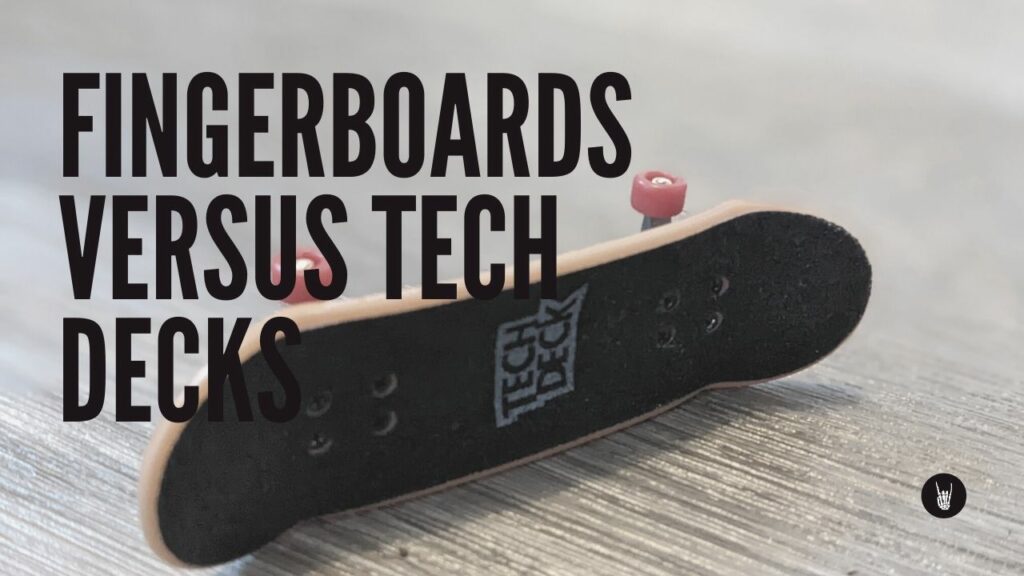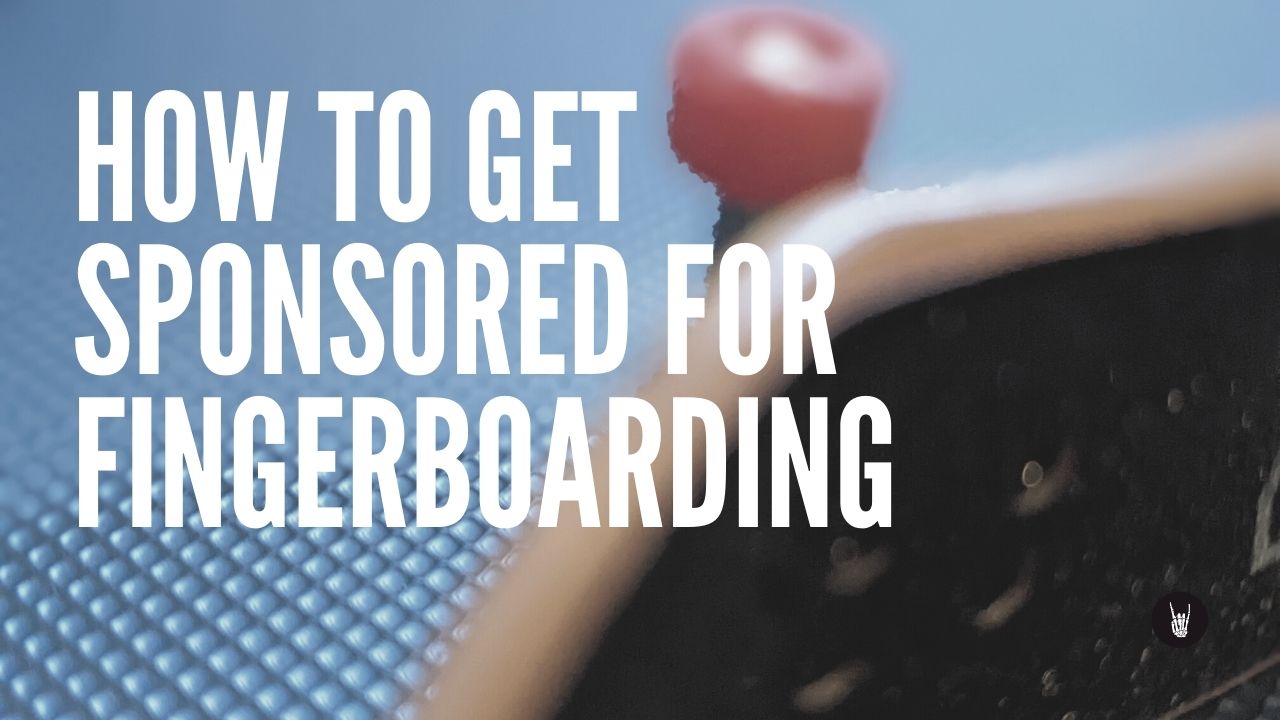If you’re a fingerboard enthusiast, you probably already know that the brand you choose makes a big difference in your performance. There are many brands of fingerboards on the market today, and the more you research them, the more familiar you’ll become with them. You’ll notice that some of these brands pop up over and over again, but this is good because it means they are reputable and well-loved by customers. You’ve likely also heard comparisons between a fingerboard and a Tech Deck, and it’s easier than you think to learn what the differences are.
Basically, a fingerboard is a miniature skateboard that people operate with their fingers. On the other hand, Tech Deck is a brand of fingerboards that many people consider top-of-the-line. Tech Deck fingerboards are often made out of plastic injection molding, while professional fingerboards are usually made out of wood.

All About Tech Deck
There are numerous materials used to make fingerboards, but most of them are made out of either plastic or wood. As you can imagine, the ones made out of wood are usually higher in quality, but if you’re just starting out, it is much less expensive to buy plastic ones because wooden fingerboards can be very expensive. Tech Deck makes high-quality fingerboards, but they are generally made of plastic. Plastic fingerboards are good for beginners, but once you reach a certain skill level, you usually can’t go any further without purchasing a wooden fingerboard.
Nevertheless, Tech Deck makes a lot of fingerboards and has been in business for quite awhile, and there’s something to be said for longevity. Plastic fingerboards are also less expensive than wooden fingerboards, and since budget is a consideration for most people, this is good to know. Tech Deck even offers a 10-pack of plastic fingerboards for under $25, which is an excellent price. If you’re a beginner and you want to make sure your fingerboard will withstand everything you’re planning to do with it, this package is a great option for you.
Most Tech Deck fingerboards are made for fans ages six and up. They even make fingerboards for the Performance Series, which allow you to do some advanced tricks and moves. There are also rare and hard-to-find fingerboards from Tech Deck that people have entered contests with and scored highly. These include the BMX Freestyle Hits fingerboard, which has been used by a lot of first-, second-, and third-place winners of official fingerboarding contests.
Another advantage of buying Tech Deck fingerboards is that they are easy to find and don’t usually break easily. They also come in dozens of great-looking colors and designs that can make fingerboarding a lot more fun. The thing is, plastic can be more durable than wood because wood can sometimes crack or break. That being said, some of the more complicated tricks are harder to do on the plastic fingerboards, which is why most experts recommend buying a wooden fingerboard once you advance to a certain skill level. In other words, you can only get so good with a plastic fingerboard.
Another advantage of using a wooden fingerboard is that it gives you more “pop” as compared to plastic fingerboards, which will become more important to you the more your skill level grows. But, we’re getting a little ahead of ourselves. For now, just know that while plastic fingerboards, such as the ones made by Tech Deck, are durable and inexpensive, you can do more with a wooden fingerboard when it comes to tricks and moves, which is why most fingerboard enthusiasts eventually move up to these types of boards.
What About Professional Fingerboards?
As compared to Tech Deck plastic fingerboards, any fingerboard designed for professional use is going to be made out of wood. Normally, they’re made out of veneer or maple wood with an average of five plies, depending on the board’s thickness. Wooden fingerboards have a more authentic look and look just like a real-life skateboard, and it gives more pop when compared to a plastic board. The more expensive the fingerboard is, the higher in quality all of its components are. It takes a lot of pieces and parts to create the perfect fingerboard, and the more expensive ones have the best components on the inside.
Another thing to keep in mind if you’re trying to decide between plastic (which is usually some type of resin) and wood is this: plastic fingerboards are very smooth and wooden ones usually have some type of textured finish so that you can “grip” them better. While the smooth ones might sound better, the bottom line is that with a little textured finish on it, the wooden ones are generally easier to maneuver because your fingers won’t slip off of the board as easily as they would if you’re using a plastic one. This is one of the main reasons why many professional fingerboarding companies put a textured surface over the wood of the fingerboard.
Now you know that at least most Tech Deck fingerboards are made out of plastic and professional fingerboards are made out of wood, and therein lies the difference between the two. Since that’s out of the way, let’s now take a look at the pros and cons of both plastic and wooden fingerboards.
Choosing What’s Right for You: Plastic Versus Wood Fingerboards
As you can imagine, there are advantages and disadvantages to both plastic and wood fingerboards. The plastic ones, for instance, are inexpensive, easy to find, and very durable. Despite the inexpensive plastic and resin that is often used in these types of fingerboards, they still tend to last through a lot of abuse and keep on going. The disadvantages, however, include that you can only do so much with a plastic fingerboard before you’ll be required to buy a wooden one. Of course, this won’t be a problem if you’re just a casual fingerboarder and you’re just doing it for fun.
On the other hand, if you do want to enter contests devoted to fingerboarding, you’ll have to have a wooden fingerboard. While more expensive than the plastic ones, you can do more with a wooden fingerboard as far as moves and tricks are concerned. The textured deck allows for more flexibility when learning tricks, which makes it easier to do so. They do sometimes break, but if they’re made out of good quality wood, such as maple, this is a lot less likely to happen. The main thing you have to prepare for is the price because wooden fingerboards can cost $50, $100, or even more.
Conclusion
By now you may be wondering which type of fingerboard is best for you – a Tech Deck, or plastic fingerboard, or a professional wooden fingerboard. Naturally, your goals will guide you toward the right answer. If you intend to become a pro at fingerboarding at some point, you’ll need a wooden fingerboard. It’s just that simple. But, if you only want to fingerboard casually or as a hobby, you can likely stick with plastic fingerboards and they should be able to accommodate you. Even if you do intend to go pro someday, starting out with plastic fingerboards is never a bad idea.
When you research fingerboards, take all of these things into consideration, study the brand names, and read reviews written by real-life customers. This is the best way to make the best decision in the end.



